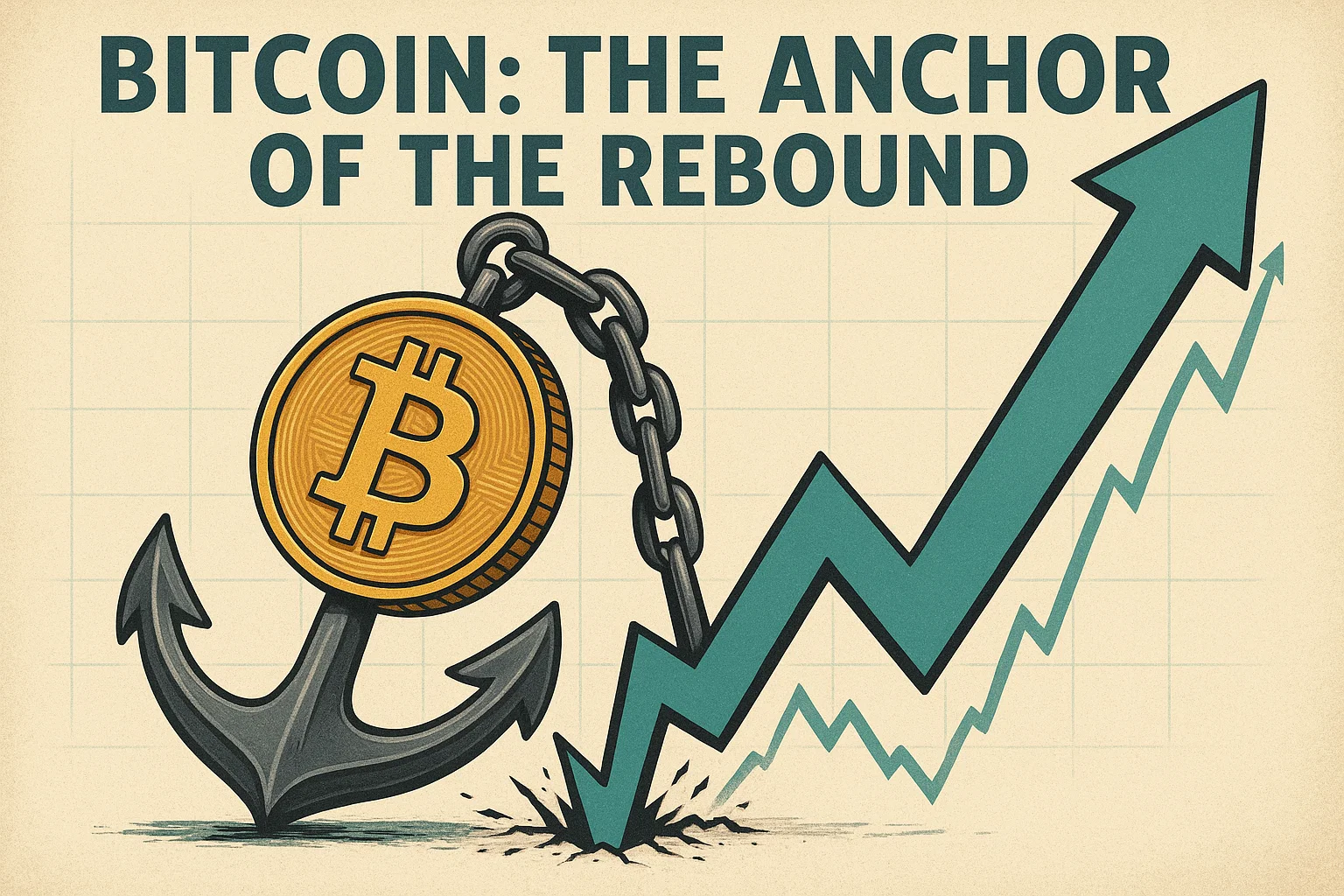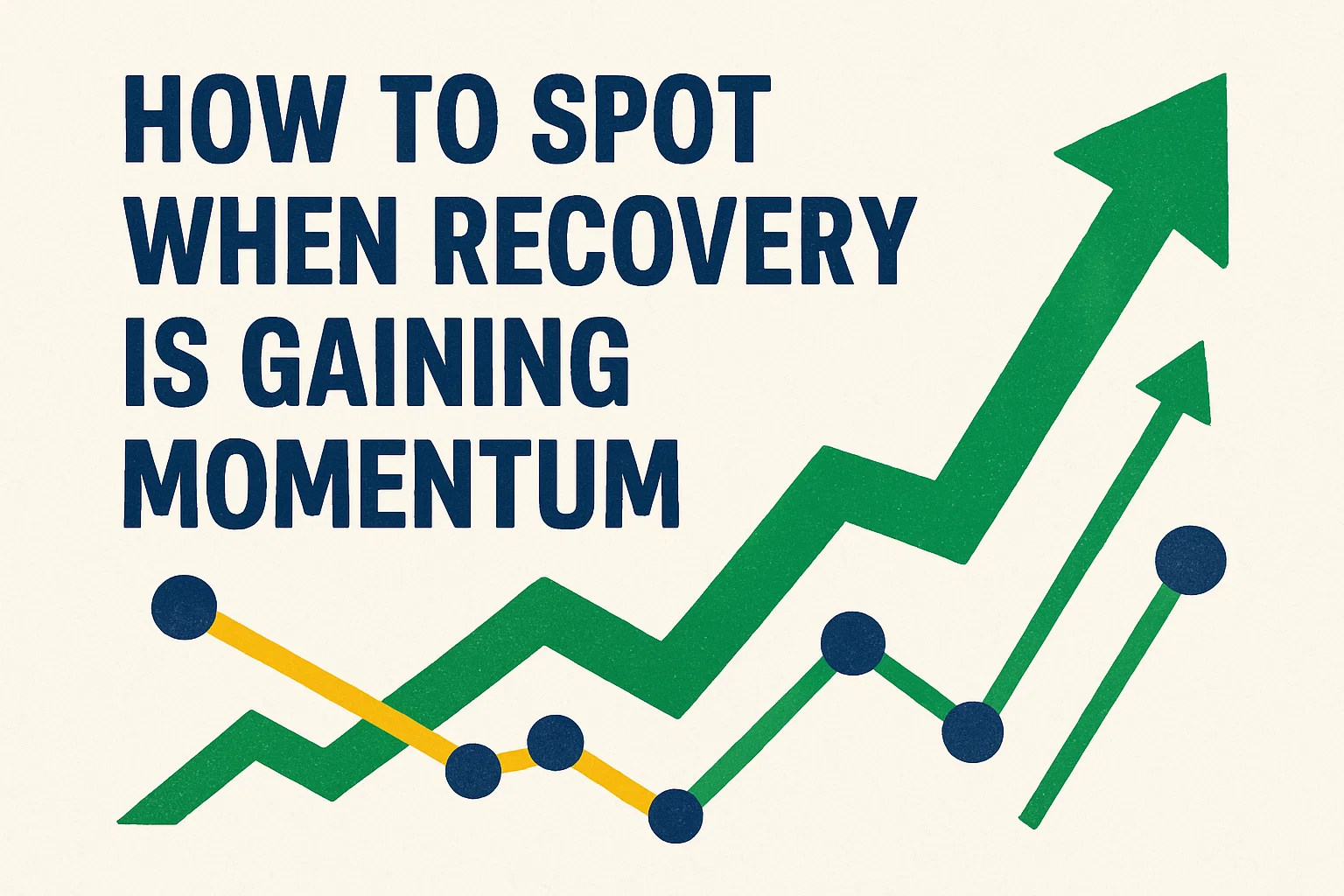The past few months have tested the resilience of the cryptocurrency market, but the tide is shifting. After a period marked by sharp drawdowns, liquidations, and shaken confidence, prices are beginning to stabilize and, in many cases, to climb. Bitcoin is grinding higher from recent lows, while leading altcoins are reclaiming key levels. More importantly, sentiment and participation are improving as trading volumes revive and long-term indicators turn constructive. This emerging recovery is not a guaranteed straight line up—nothing in crypto ever is—but the signs of healing are hard to ignore.
In this comprehensive deep-dive, we’ll unpack why the market appears to be mending, how Bitcoin and altcoins are behaving, what on-chain metrics and macro factors are telling us, and how investors can think about risk, positioning, and time horizons. Along the way, we’ll weave in LSI keywords such as digital assets, blockchain technology, market capitalization, decentralized finance (DeFi), non-fungible tokens (NFTs), institutional adoption, crypto volatility, bear market, and bull run to provide context. The goal is a clear, balanced view that informs without hype and helps you navigate the market with a steadier hand.
Why the Market Looks Healthier Now
Stabilizing Macro Winds and a Shift in Risk Appetite
One of the biggest headwinds for digital assets has been macro uncertainty. As inflation data shows signs of cooling and interest-rate paths become less opaque, risk appetite tends to recover. A more predictable macro backdrop often benefits assets with higher volatility, and cryptocurrencies fit that bill. While macro can change quickly, fewer surprises in rates and growth data help traders re-engage, lift liquidity, and support price discovery across Bitcoin and altcoins.
From Capitulation to Accumulation
Across market cycles, crypto volatility produces phases of capitulation where leveraged positions get washed out. Following these events, patient buyers and long-term holders frequently return, creating a floor for prices. Rising exchange outflows, increasing on-chain accumulation by long-term wallets, and reduced miner selling can all align to signal an early healing phase. Put simply, when forced sellers are mostly gone, it takes less demand to push prices up.
Improving Liquidity and Market Structure
Bid-ask spreads tighten as liquidity providers step back in, and depth on order books improves. This helps dampen dramatic intraday swings and encourages larger players to allocate incrementally. As custody solutions mature and best-execution venues compete on transparency, institutions find it easier to express a view, fueling institutional adoption that adds depth to the market over time.
Bitcoin: The Anchor of the Rebound

The Narrative Gravity of Bitcoin
As the oldest and most widely recognized cryptocurrency, Bitcoin remains the bellwether. When Bitcoin stabilizes—or better yet, advances—confidence across the ecosystem tends to rise. A sustainable Bitcoin recovery often precedes broader altcoin performance because it signals that risk is again being rewarded, liquidity is returning, and larger pools of capital are participating.
On-Chain Signals That Matter
Several on-chain metrics often correlate with healthier phases. A rising number of active addresses suggests greater network utilization. Growing transaction volumes indicate more economic activity on the blockchain. Lower balances on centralized exchanges can point to accumulation by long-term holders who prefer cold storage. Meanwhile, the MVRV ratio, hash rate trends, and miner balances can provide additional texture on whether a move higher has durable underpinnings. No single indicator is infallible, but when many flash green together, the probability of a sustained advance increases.
The Psychological Power of Round Numbers
Markets are human stories written in numbers. For Bitcoin, reclaiming and holding psychologically important price levels tends to catalyze momentum. Each time a round number serves as support rather than resistance, sidelined capital inches back in. This doesn’t guarantee a bull run, but it does recalibrate expectations and narrows the range of plausible bearish outcomes.
Altcoins: Divergence, Selectivity, and New Leadership
Not All Altcoins Heal at the Same Pace
Altcoin recoveries are rarely uniform. Large-cap networks with strong developer ecosystems, proven security models, and real user activity tend to lead. Mid-cap projects may follow if they deliver updates, ship products, or demonstrate sustained traction. Lower-liquidity names can lag or even fade if narratives don’t translate into adoption. In this phase, selectivity matters more than ever.
The Role of Utility and Tokenomics
For altcoins, fundamentals come down to product-market fit and tokenomics. Protocols that cut emissions, create real demand sinks for their tokens, or route more fees to token holders via buybacks or staking can outperform. By contrast, projects with perpetual inflation and little utility face a steeper climb. Investors paying attention to supply schedules, fee burns, and staking dynamics may be better positioned to identify durable winners.
DeFi, NFTs, and the Expanding App Layer
The previous cycle spotlighted decentralized finance (DeFi), non-fungible tokens (NFTs), and gaming as high-velocity innovation fronts. In a healing market, protocols that simplify user experience, reduce fees via layer-2 scaling, and provide clear, measurable utility can accrue value. The app layer remains the most visible proof of blockchain technology’s promise; when end users return, network effects strengthen, and value can flow to both infrastructure and application tokens.
Sentiment: From Fear to Cautious Optimism
Funding, Open Interest, and the Leverage Dial
Perpetual futures funding rates and open-interest trends offer a window into trader psychology. Excessive long leverage is a red flag for near-term squeezes, while balanced or slightly negative funding often signals healthier positioning. In early recoveries, seeing cautious, rather than euphoric, leverage is a positive sign that rallies are less brittle.
The Narrative Cycle and Media Tone
A market’s story matters. Headlines evolve from despair to curiosity to optimism as prices stabilize. A shift from “crypto is dead” to “crypto shows resilience” changes capital flows. Social and developer communities—measured by repository commits, hackathon participation, and grants—also tend to reawaken, feeding a virtuous loop of attention, talent, and investment in digital assets.
Risk Management in a Recovering Crypto Market
Position Sizing and Time Horizons
Recovery phases can be choppy. Rather than betting the farm, many investors prefer staged entries and clear invalidation points. Time horizon is crucial: traders focus on momentum and support/resistance, while long-term allocators emphasize the multi-year adoption curve of blockchain technology. Aligning strategy with time horizon can reduce whipsaw fatigue and improve decision quality.
Diversification and Correlation
Diversification across Bitcoin, quality altcoins, and stable yield strategies can cushion drawdowns. Correlation between crypto assets tends to be high during stress but can fall during expansions, especially when sector-specific catalysts emerge. Thoughtful diversification helps investors participate in upside while avoiding concentration risk in a single narrative.
Security, Custody, and Operational Discipline
A healing market invites new participants, and with them come new risks. Robust operational hygiene—hardware wallets, multi-sig, reputable custodians, and careful key management—is non-negotiable. On centralized platforms, strong KYC/AML controls, proof-of-reserves transparency, and prudent risk frameworks mitigate counterparty risk. Security is strategy, and in crypto, it’s alpha preservation.
Catalysts That Can Extend the Recovery
Regulatory Clarity and Institutional Doors Opening
Incremental regulatory clarity often unlocks sidelined capital. Clearer guidance on custody, disclosures, and market structure lowers barriers for institutions. As compliance pathways firm up, pension funds, endowments, and corporate treasuries can explore allocations. This institutional bid may not be explosive, but it can be steady, deepening liquidity and dampening crypto volatility over time.
Technological Upgrades and L2 Adoption
Roadmaps across major networks point to scalability improvements, privacy enhancements, and developer tooling upgrades. Layer-2 adoption can cut fees and speed confirmations, expanding the addressable market for consumer-grade apps. As user experience improves, the conversion funnel from curious to committed becomes shorter, supporting market capitalization growth across the ecosystem.
Real-World Assets and Yield Innovation
Tokenization of real-world assets (RWA), credit markets built on transparent collateral, and compliant stablecoin rails are reshaping DeFi. When yields are rooted in real economic activity, risk models improve, and capital becomes stickier. This bridges traditional finance and digital assets, creating durable demand for blockspace and, by extension, value accrual for underlying tokens.
What Market Healing Does—and Doesn’t—Mean
The Path Is Upward, But Not Linear
Recoveries frequently include retracements that test new support zones. That’s healthy. It shakes out weak hands and reinforces resilient levels. Investors should expect volatility spikes and news-driven downdrafts even in the context of a larger uptrend. A mindset that embraces scenario planning rather than prediction can keep emotions in check.
Valuation Discipline Still Matters
Momentum can carry prices beyond fair value for stretches. In these moments, valuation frameworks—fee multiples for protocols, discounted cash-flow analogs for token sinks, or network-effect heuristics—help. The best time to think about risk is before the market heats up, not after.
Community and Execution Trump Hype
Sustainable value accrues to teams that build relentlessly, listen to users, and ship improvements. Communities that welcome developers, reward contributions, and maintain credible roadmaps often outlast hype cycles. Amid healing, keep your eye on execution over narratives.
A Practical Framework for Participating in the Recovery
Define Objectives and Rules First
Before pressing buy, write down your objectives: capital preservation, growth, or yield. Then set rules: maximum portfolio drawdown, allocation caps per asset, and rebalancing triggers. These rails protect you from impulsive decisions when crypto volatility surges.
Use On-Chain and Market Data Together
Blend on-chain metrics (active addresses, exchange balances, long-term holder supply) with market data (volume trends, funding rates, relative strength). Agreement between these datasets strengthens conviction; disagreement suggests caution and smaller position sizes.
Embrace Education as an Edge
Understanding blockchain technology, consensus mechanisms, token distribution, and governance can separate signal from noise. Education compounds. It helps you evaluate claims, spot unsound economics, and identify innovations with staying power.
Bitcoin vs. Altcoins: Finding the Balance
Bitcoin’s Role as Digital Reserve
Bitcoin’s predictable issuance schedule and robust security make it a core holding for many. In a recovering market, it can serve as the ballast that stabilizes a portfolio, with upside linked to broader adoption, macro hedging narratives, and network growth.
Altcoins as High-Beta Expressions
High-quality altcoins represent targeted theses—scaling, privacy, data availability, DeFi, gaming, identity, or NFT infrastructure. They tend to move more than Bitcoin in both directions. Allocations here reward diligence: evaluate the team, code audits, treasury runway, and the clarity of token value accrual.
Dynamic Allocation and Rebalancing
As conditions change, so should weights. When Bitcoin leads strongly, a conservative tilt may make sense. If altcoins begin to post sustained relative strength, a measured shift can capture excess returns. Rebalancing imposes discipline and takes advantage of mean reversion.
The Psychology of Staying Power
Patience Outperforms Prediction
Attempting to nail exact tops and bottoms is seductive—and usually costly. A rules-based approach with staged entries, clear exit criteria, and periodic reviews can outperform seat-of-the-pants trading. Patience lets compounding do its quiet work.
Detach From Daily Noise
In recovery phases, the news cycle accelerates. Not every headline matters. Focus on what’s measurable: user growth, developer activity, liquidity depth, and execution milestones. Let those guide your conviction, not the chatter.
Community Matters More Than You Think
Healthy communities provide shared research, mentorship, and early warnings about risks. Join a few that emphasize learning over hype. In a space that evolves this quickly, peer review is a superpower.
How to Spot When Recovery Is Gaining Momentum

Broadening Leadership and Rising Breadth
Watch for more assets making higher highs and higher lows. Rising breadth—more coins participating in uptrends—suggests a healthier market than one carried by a handful of names. Sector rotation, where leadership moves from infrastructure to apps to consumer tokens, can also mark a maturing rally.
Continuous Liquidity Improvements
Persistent increases in spot volumes, derivatives open interest held at balanced funding, and tighter spreads all point to deeper liquidity. This cushions volatility and supports the thesis that the market’s “wounds” are healing.
Fundamental Milestones and Shipping Velocity
Mainnet launches, protocol upgrades, and successful audits fortify confidence. The more that code ships and users arrive, the more likely it is that price gains stand on bedrock rather than narrative alone.
See More: Bitcoin Mining Cycle Resets After Difficulty Surge
Conclusion
The cryptocurrency market is not out of the woods, but it is undeniably healing. Bitcoin has steadied, altcoins are beginning to follow with discernment, and a cocktail of improving liquidity, constructive on-chain metrics, and clearer macro signals is restoring confidence. For investors, the task now is to participate thoughtfully: respect risk, favor quality, and let data—not hype—guide your decisions. Recovery is a process, not a moment, and those who approach it with patience and discipline may find themselves well-positioned for the next durable advance.
FAQs
Q: Is this the start of a new bull run or just a relief rally?
It’s too early to declare a full bull run, but conditions are improving. Stabilizing macro factors, healthier on-chain signals, and rising liquidity support a constructive view. Confirmation would involve sustained higher highs across Bitcoin and altcoins, expanding breadth, and continued fundamental progress.
Q: How should I balance Bitcoin and altcoins during recovery?
Consider Bitcoin as the core, thanks to its liquidity and network security, and add selective altcoins that show real utility, strong teams, and clear tokenomics. Adjust weights based on relative strength, risk tolerance, and time horizon, and rebalance periodically to keep risk in check.
Q: What risks could derail the recovery?
Key risks include adverse macro surprises, regulatory setbacks, security breaches, and excessive leverage building up in derivatives. Maintaining prudent position sizes, using reputable custody, and monitoring funding and open interest can help mitigate these risks.
Q: Which indicators best signal that the market is healing?
Look for increased active addresses, declining exchange balances for major assets, constructive funding rates, tighter spreads, and broader participation across sectors like DeFi and NFTs. When multiple indicators align, the recovery case strengthens.
Q: Are NFTs and DeFi relevant in this phase, or is it just about Bitcoin?
Both matter. DeFi and NFT ecosystems often reaccelerate as fees fall and user experience improves—especially with layer-2 growth. While Bitcoin sets the tone, real usage at the application layer helps confirm that the broader digital assets market is regaining momentum.

















